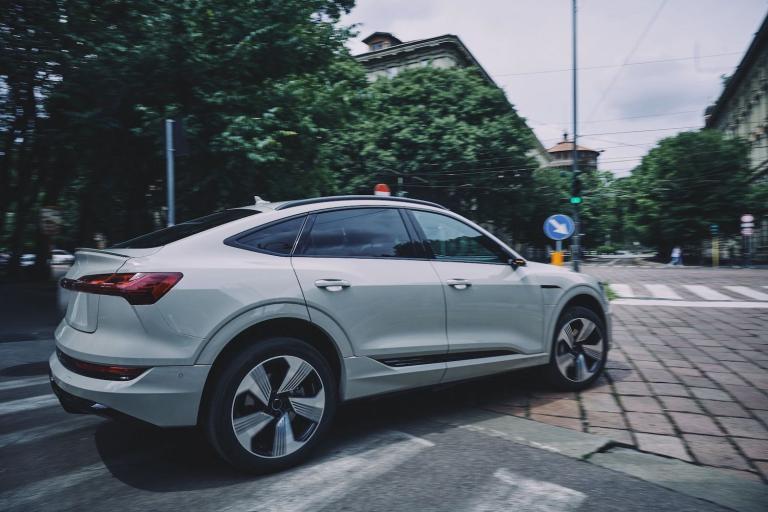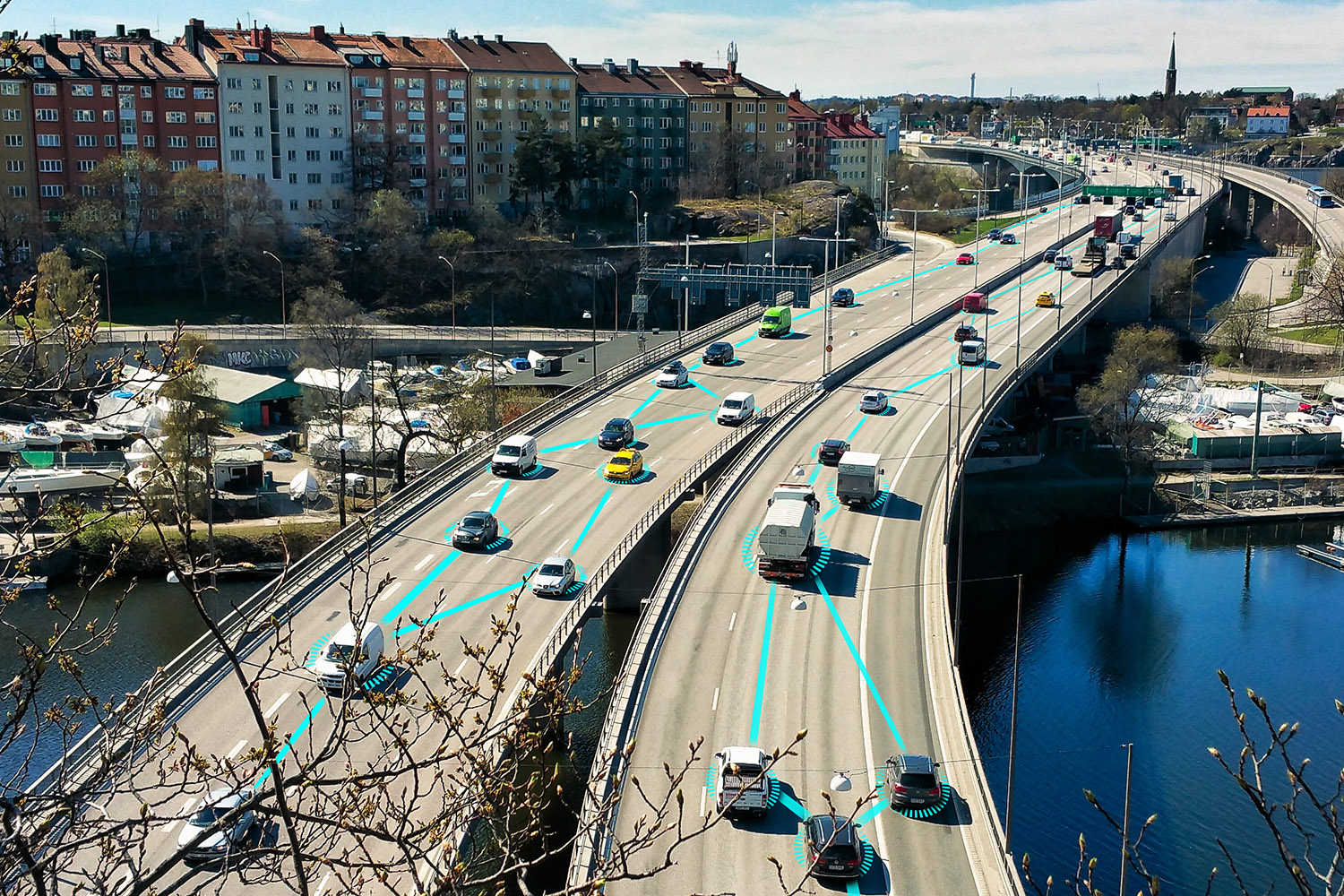Driving net-zero: how connected cars deliver on curbing emissions

Connected driving is the key to unlocking true automation, but can it also improve the environment?
The connected car is the next stage on the journey to fully autonomous driving. Many vehicles already have autonomous features, like advanced driver assistance systems (ADAS) for parking and some driving functions, but the connected car takes this one step further. With its own connection to the internet, it shares data with devices inside and outside the vehicle, leading to greater road awareness, route planning and, of course, the potential for automation.
It all sounds like an exciting new experience for the driver. However, today, tech has to offer more than simply consumer satisfaction; it also has to deliver on net zero. Transportation accounts for 22% of total GHG emissions, and private cars account for 14% of GHG. Urgent action is needed.
So does connected driving help lead us to net zero, and if so, how?

Read more: Is this the end of EV range anxiety?
Electric vehicle (EV) adoption
We are on the slow march to electrification. In the UK, the government proposed in 2020 that all new cars and vans would be zero emissions by 2035, while in the US, the Biden administration has a target of 50% EV vehicles by 2030. Whatever the figure, EV production will become the norm in ten years.
Primarily, connected driving will persuade consumers to adopt EVs, even as their primary vehicles. How?
Research suggests that, apart from the usual fears surrounding new technology, the core reasons why people may hesitate when it comes to EV purchases are range and charging infrastructure. Research commissioned by Ford, published in 2022, found that only a fifth of consumers in the UK said they would consider going EV in the next three to five years. The reasons cited were range anxiety (37%), worries about where to charge (51%) and affordability (53%). This pattern is reflected across the Atlantic, with research by Autolist showing US citizens were also worried about EVs due to range, price and charging fears (or myths!).
Naturally, governments, car manufacturers and energy suppliers need to do more to deliver on charging infrastructure. There are only 46,000 public EV charging points in the US, compared to over 150,000 gasoline fueling stations. Currently, EV owners tend to do home charging, and that needs to change for EVs to become genuinely accessible to the 30% of US homes that cannot home charge. However, consumers are also not factoring in the advantages of connected driving when it comes to EVs.
Electric vehicles are connected. Connected services can show drivers where the nearest charge point is and the right connecter type.
Routing technology, such as HERE Routing, uses several inputs — distance, energy consumption, typography and terrain — to direct the vehicle to the most efficient route, leading to longer ranges and fewer charging stops. The technology will also help drivers plan charging stops for longer journeys.
Essentially, connected tech connects motorists with the entire EV and consumer infrastructure, alleviating anxieties and enhancing the driving experience. It doesn't replace the need to improve infrastructure, but it does take the pain out of planning.

Emission transitions
For now, combustion engines are still the norm and may remain so for some time, particularly when it comes to commercial vehicles. What can connected driving do to reduce emissions?
We already know that smoother driving cuts down on fuel consumption. The European Automobile Manufacturers Association's (ACEA) study showed that avoiding excessive braking and accelerating can cut emissions by anything from five to 20%. Currently, driving schools teach eco-driving, at least in the UK, but this technology does more.
Connective tech can actively prevent poor eco-driving by nudging better driver behaviors through speed controls and real-time mid-journey and post-journey advice. Research from the University of Bath showed that using a driver advisory tool in commercial vehicles reduced aggressive driving by 16.4% and fuel consumption by 7.6%. Connected driving technology can also show excessive idling, which, if mandated, can be curbed.
As for EVs, planning more efficient and less congested routes through real-time routing can reduce fuel consumption and CO2 emissions. It's a win-win for commercial fleets because drivers are expected to get to their destination quickly, and failure to do so impacts profits.
EVs can also help driver retention because driving is quieter and more comfortable.
Connected tech can also improve safety in combustion vehicles through outbound cameras and driver alerts. It should be possible to prevent certain risky driver behaviors, with knock-on effects for road safety, and because you are stopping hard braking, lowering GHG emissions.
There are several ways connected driving can reduce emissions on top of the measures we've already described when it comes to commercial vehicles.
Connected driving tech can help drivers navigate zone management, where commercial vehicles are not permitted on specific roads or regions (low emissions areas, for example). Compliance, enforcement and driver logs can be digitized through connected driving tech, encouraging energy-conscious behaviors.
The tech may also enable commercial goods vehicles to "platoon". Platooning is where a lead driver deals with wind resistance, and other trucks follow in its slipstream. Reducing wind resistance for following trucks cuts emissions, and connected tech enables the trucks to communicate and adjust positions automatically. According to the ACEA, platooning can cut emissions from following trucks by between seven and 16%. This principle also works for autonomous cars.
Ultimately, commercial vehicles will have to transition to EVs alongside the consumer market. However, using tech, connected driving can significantly contribute to net zero now.

Connected driving and urban futures
Connected driving is part of an infrastructure and reimaging of the urban landscape. We can expect at least 50% EV adoption in ten years. Vehicles may be connected to everything — infrastructure, lights, road signs, potholes, advanced routing, as well as charging points and retail — taking the guesswork out of driving.
Connected driving can help lessen noise and congestion, lead to changes in driver behavior, improve driver and road safety, and offer possibilities for shared mobility. Our urban roads may be less dominated by traffic because drivers will control when and where they will drive. It's what our experts like to call full-picture sustainability.
As Politico pointed out, just installing the tech doesn't mean drivers will change how they drive or that businesses will do what's necessary to deliver on net zero; ultimately, it comes down to regulation. However, if governments and companies are on board and are willing to harness the tech solutions on offer, eco-driving will just become another new reality. We know how to create a cleaner future. Let's do it.
Sign up for our newsletter
Why sign up:
- Latest offers and discounts
- Tailored content delivered weekly
- Exclusive events
- One click to unsubscribe


